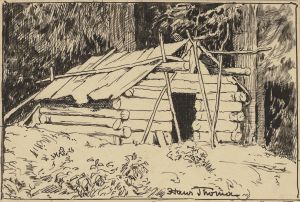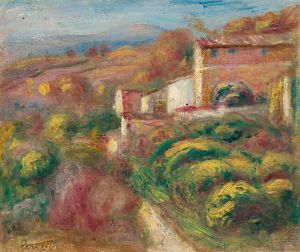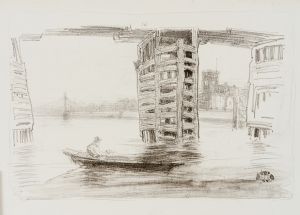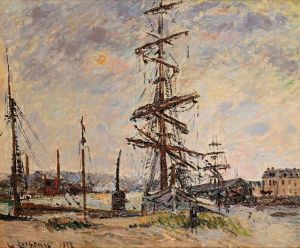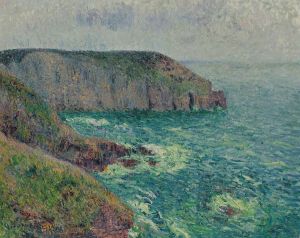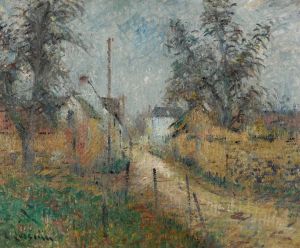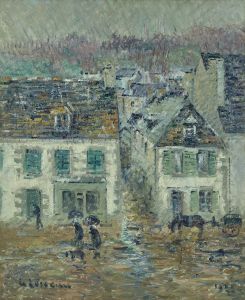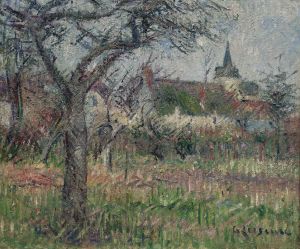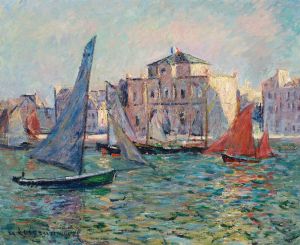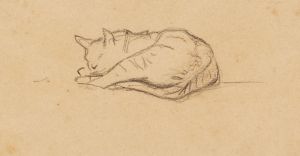
La Berge, Pontoise
A hand-painted replica of Gustave Loiseau’s masterpiece La Berge, Pontoise, meticulously crafted by professional artists to capture the true essence of the original. Each piece is created with museum-quality canvas and rare mineral pigments, carefully painted by experienced artists with delicate brushstrokes and rich, layered colors to perfectly recreate the texture of the original artwork. Unlike machine-printed reproductions, this hand-painted version brings the painting to life, infused with the artist’s emotions and skill in every stroke. Whether for personal collection or home decoration, it instantly elevates the artistic atmosphere of any space.
Gustave Loiseau (1865–1935) was a French Post-Impressionist painter known for his landscapes and scenes of rural life. His work is characterized by a distinctive brushstroke technique and a focus on capturing the effects of light and atmosphere. One of his notable paintings is "La Berge, Pontoise," which exemplifies his style and thematic interests.
"La Berge, Pontoise" depicts a serene riverside scene in the town of Pontoise, located in the Île-de-France region, northwest of Paris. Pontoise was a popular location for artists during the late 19th and early 20th centuries, attracting figures such as Camille Pissarro and Paul Cézanne. The town's picturesque landscapes and the quality of light made it an ideal subject for painters interested in exploring the nuances of natural settings.
In this painting, Loiseau captures the tranquil beauty of the riverbank, with a focus on the interplay between water, land, and sky. His use of color is subtle yet effective, employing a palette that reflects the natural tones of the environment. The brushwork in "La Berge, Pontoise" is typical of Loiseau's technique, where short, rhythmic strokes create a sense of movement and texture. This method allows him to convey the shimmering effect of light on water and the gentle rustling of leaves in the breeze.
Loiseau's approach to composition often involved a careful balance between detail and abstraction. In "La Berge, Pontoise," he achieves this by structuring the scene with a clear foreground, middle ground, and background, guiding the viewer's eye through the painting. The foreground typically features elements such as trees or foliage, which frame the view and provide a sense of depth. The middle ground often includes the river itself, depicted with reflections and ripples that suggest a dynamic, living landscape. The background usually consists of the sky, rendered with soft, blended colors that evoke the time of day and atmospheric conditions.
The painting reflects Loiseau's commitment to capturing the essence of a place rather than its precise details. This aligns with the broader goals of the Post-Impressionist movement, which sought to move beyond the literal representation of subjects to explore their emotional and sensory impact. Loiseau's work, including "La Berge, Pontoise," is often noted for its ability to evoke a mood or feeling, inviting viewers to experience the scene as if they were present.
Gustave Loiseau's contributions to art were significant during his lifetime, and his works continue to be appreciated for their technical skill and emotive power. "La Berge, Pontoise" is a testament to his ability to transform a simple riverside view into a compelling artistic expression. His paintings are held in various collections and continue to be studied for their unique approach to landscape painting.
Overall, "La Berge, Pontoise" is a fine example of Loiseau's mastery of light, color, and composition, capturing the quiet beauty of the French countryside with sensitivity and nuance.






